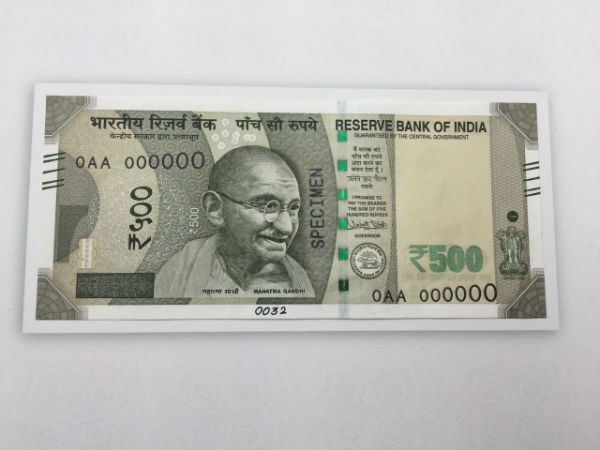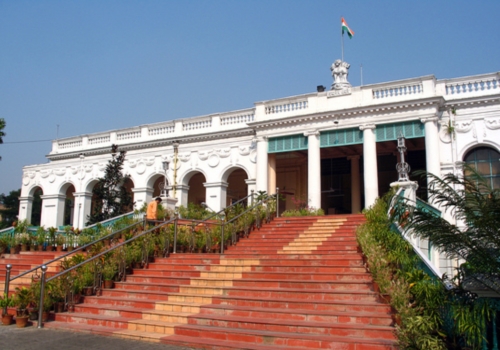What Are Exoplanets And How NASA Detects Life Beyond Our Solar System
Bharti Airtel Set To Acquire Telenor India Within This Year
Google Celebrates NASA’s Discovery Of Seven Earth-Like Planets With An Animated Doodle
Some Home Remedies That Might Sound Bizarre But Actually Work Like A Charm
Akshay Kumar Feels He Has Made Enough Money, Now Wants To Focus On Content & Characters
Delhi ATM Dispenses Fake Rs 2000 Notes From ‘Childrens Bank of India’ With ‘Churan Lable’
Adolf Hitler’s Personal Telephone During World War II Is Up For Auction In The US
From Salman Khan To Rekha, Neil Nitin Mukesh’s Wedding Reception Was Quite A Starry Affair
Heres What Happened When Rs 1,000, Rs 5,000 and Rs 10,000 Notes Were Banned In 1978
In a different era, another prime minister of Gujarati origin had shocked the nation with a similar and sudden announcement. Finance minister-turned-PM Morarji Desai informed the nation on the night of January 16, 1978, about his decision to demonitise Rs 1,000, Rs 5,000 and Rs 10,000 notes. It was declared that the notes would cease to be legal tender by the time the banks closed on that day. The next day, that is January 17, all banks and treasuries of governments were kept closed, like they are closed today. HM Patel, a former finance secretary and also hailing from Gujarat, was the finance minister that time, and Desai was heading the newly formed Janata government after defeating the Congress post Emergency debacle. The aim was the same: curbing black money and illicit transfer of financing. To implement the scheme, the government brought in the High Denomination Bank Notes (Demonetisation) Act, 1978. This Act banned the transfer and receipt of high denomination bank notes. Any contravention, such as false declaration by depositors, was made punishable and could send a person to three years in jail. Did it work? Not entirely, because Rs 1000 notes made a comeback before this Act could complete its silver jubilee. In fact, it was the NDA government that reintroduced them in 1998. First, a brief look at Demonetisation drives in 5 points: High denomination notes, that is Rs 500 and above, started circulation in India in 1934. The highest denomination note - Rs 10000 - ever printed by the Reserve Bank of India was in 1938. The Rs 1000 and Rs 10000 banknotes were demonetized in January 1946. Yes, that was the first time such a thing was enforced, again for curbing black money. They made a comeback in 1949. The second demonetisation, as mentioned above, was in 1978 by Morarji Desai-led Janata government - Rs 1000, Rs 5000 and Rs 10000 notes were abolished. Again, high denomination notes returned within three decades. How did it impact the public in 1978? The impact was limited. Unlike today, not many people possessed currency of such high denomination. "I have never seen a Rs 1,000 note. I am not bothered" - here's how a government employee reacted to the move in 1978, as per this Telegraph report. This excerpt from a TOI report will put the picture in perspective. If you had a Rs 1000 note in 1978, you could buy 5 sq ft of real estate space in posh south Bombay. Today, a Rs 1000 note won't buy you even a hundredth of a square foot in that area. It had a palpable effect, however, on the price of gold and commodity that dropped 5% and 10% within a week of the announcement. Did it work? Not in entirety, say economists, because high denomination notes returned eventually. And, such notes, as we know are the basis of corruption and illicit deals related to unaccounted money. Abhiroop Sarkar, Professor at Indian Statistical Institute, says the 1978 move had no effect on the circulation of black money. "That's because people don't stack black money in cash. Rather, they stash it in undisclosed accounts in Swiss Banks. So demonetisation won't affect the big fish," he explained to IANS. Here, it's pertinent to mention that touts made most of the move in initial days. As people didn't want to deposit their money in banks fearing tax problems, they fell for the touts instead. Anil Harish, a senior advocate told TOI, At places like Crawford Market and Zaveri Bazar, people were selling Rs 1,000 notes for as little as Rs 300. Will it work now? It can't be ruled out. Because the fight against black money is a continuous one and not a one-stroke solution. Also, in today's digital, more transactions are happening through electronic transfers. Also, far more rural people have bank accounts now than they ever did. So for now, it's just wait and watch.





